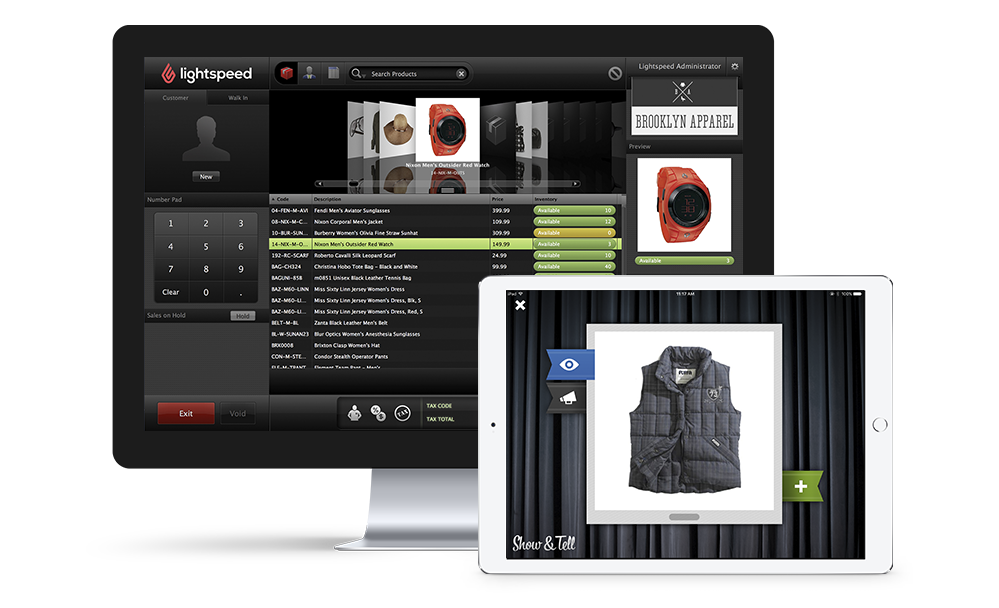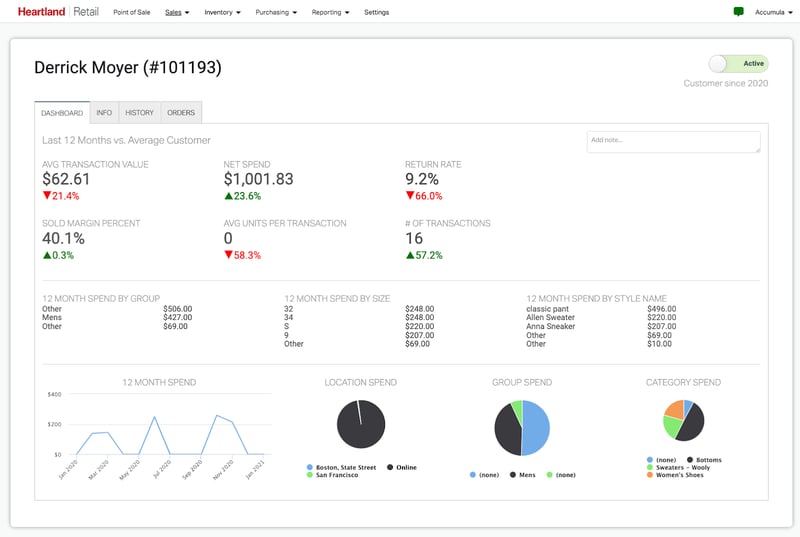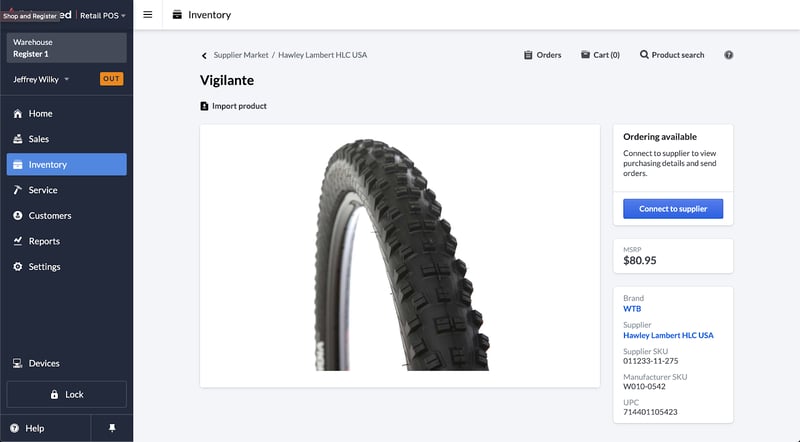
Lightspeed Onsite is “retiring.” If you're a Lightspeed Onsite user, that's a polite way of saying that you’ve got another business challenge. After the last year of uncertainty, you’re probably thinking this is terrible timing.
It is, but there are some compelling Lightspeed Onsite replacements available and most businesses are having excellent success migrating to the right solution. In fact, there are several Lightspeed Onsite alternatives that may be just as good or even better for your business moving forward.
In this article, we’ll explore the most popular replacement options and share what we’ve learned directly from other retailers' experiences. We’ll look at four different options:
- Lightspeed Retail and Lightspeed Ecom “All-in-one”
- Shopify and Shopify POS “All-in-one”
- Heartland Retail with Shopify Ecommerce
- Lightspeed Retail with Shopify Ecommerce
Each of these options is cloud-based, requires no server or VPN, and needs less technical support. Depending on your business, one option may be a better fit than the other (if you’re using Magento, there may be more to consider, contact us) but with Accumula’s new pricing options, the answer is more economical than ever. Regardless of which solution you choose, Accumula can help you make a smooth transition and get the most out of your new stack.
First, let’s look at the “All-in-one” solutions.
All-in-one POS and Ecommerce
Lightspeed and Shopify offer “all in one” solutions that include both POS and eCommerce. Great idea, right? In theory, an “all-in-one” solution will be simpler to manage, but simplicity also has some drawbacks. We’ve listened to feedback from hundreds of businesses who have faced this problem. Our consensus view is that an all-in-one solution works great for about 30% of companies. Yours may be one of them.
Lightspeed Retail and Lightspeed eCom
Lightspeed Retail POS integrated with Lightspeed eCom shows a lot of promise, and Lightspeed is making heavy investments in both. But keep in mind that this all-in-one isn’t really a single system; they are separate systems with an integration in the middle connecting the two. Lightspeed Ecom is working to expand the feature set and has added some truly unique features like built-in Appointment Scheduling.That said, there are some limitations around SKU count, page design, and multi-location functionality.
The most important insight that retailers’ shared with us about Lightspeed Ecom was that moving your website to another platform can take longer than expected and carry a higher than expected price tag. Redesign, migration, and relaunch can disrupt the shopping experience, and the capital expense may not be worth a modest reduction in your operating expenses. With online now arguably as important or more important for connecting with your customers, you’ll want to think twice before switching your eCommerce platform.
Shopify and Shopify POS
Shopify’s eCommerce solution with Shopify POS offers a compelling user experience and is easy to use. There is a reason they have grown so quickly. But this combo doesn’t suit everyone — most retailers need several third-party apps to get any inventory and price management functionality. This means added cost, complexity, and training. If you’re used to Lightspeed Onsites powerful inventory tools or run frequent sales, this might be a dealbreaker for you. And if you rely on demand planning reports or use a service like Management One, it WILL be a dealbreaker.
Retailers tell us that the operating costs for an “all-in-one” Shopify solution end up running about the same as an equivalent integrated solution with the extra apps required. Additionally, some said that the lack of built in inventory management actually made their business more difficult to manage. It really depends on the business.
Both Shopify and Lightspeed Retail are industry leaders within their respective wheelhouses (i.e. Shopify for eCommerce, and Lightspeed for POS) — but pairing them with their vertically-integrated alternatives doesn’t work for everyone. This can be especially true if you are used to using Lightspeed Onsite and Shopify. If you’re already using Shopify, let’s take a look at a few point of sale platforms that integrate through Accumula to gauge their strengths and weaknesses.
The Best of the Best in POS
Lightspeed Onsite was one of the very first business products to offer an “Apple-like” experience for shoppers. Dax DaSilva and his team did a fantastic job building an easy-to-use tool that was also extremely powerful. It’s not easy to replicate all that Lightspeed Onsite functionality in a cloud platform but we’ll look at the two favorites; both also supported by Accumula.
Note: Before you make any moves, you can schedule a demo to see these POS solutions in action so you can be sure that your processes will translate across the business.
Heartland Retail
Heartland Retail (formerly Springboard, recently acquired) is a good solution for businesses with multiple channels and more complex reporting requirements. Heartland includes many of Lightspeed Onsite strengths as core functionality; order management and invoicing, dashboards, and flexible, in-depth reporting.

Heartland Retail’s Customer Dashboard provides a great 360 view of every customer
From an omnichannel perspective, users especially appreciate Heartland’s order management functionality that allows line items to be distributed and invoiced to different store locations. This enables revenue and inventory to be reported by channel and location; a very nice feature for omnichannel businesses (READ: Everyone).
Accumula fully supports Heartland Retail, including pre-orders, backorders, and ship-to-store. While it is not quite as refined and organized as Lightspeed Retail, if you are deep into Lightspeed Onsites tools, this might be the right solution for you.
Lightspeed Retail
Lightspeed’s cloud point of sale for retailers, Lightspeed Retail, is now Lightspeed’s flagship product, and for good reason. Lightspeed Retail maintains the design aesthetic that made Lightspeed Onsite such a hit, and the Lightspeed Retail iPad app is both functional and beautiful.
Lightspeed has been working hard to bring Lightspeed Retail to feature parity with Lightspeed Onsite through regular updates. Retail maintains Lightspeed Onsite features like Service Orders, serial numbers, and has great addons for Accounting and Analytics (that exceed what was possible with Onsite), but there are still some gaps. Current limitations include partial quantities, backorders, and order management workflows. That said, there are also new features like Supplier Market (for product info and ordering) and Product Subscriptions that could be game-changing for your business.

The new Supplier Network feature in Lightspeed Retail allows retailers to easily add products to their store and order directly from the supplier with just a few clicks.
The good news is that if you want to stick with Lightspeed, Accumula has full support for Lightspeed Retail. There is also a growing ecosystem of third-party Lightspeed apps like Quote Machine (for quoting and invoicing, a Lightspeed Onsite gap) and Ikeono (sms messaging from inside the POS). While Lightspeed Retail is a different product, in our experience only about 20% of Lightspeed Onsite users can’t make it work for their business.
Schedule a demo with an Accumula Retail Specialist to do your due diligence before you make a change.
The 5 factors to keep in mind when reviewing Lightspeed Onsite alternatives
The best replacement for Lightspeed Onsite is going to depend very much on your business and your processes. Here are the 5 deciding factors we see it boiling down to:
- Customer Experience - Does the new POS help your team provide a great experience?
- Inventory Management - Does your business have disciplined inventory management processes? Do you have a backorder or pre-order process? Do you track inventory aging?
- Omnichannel - Is your online channel now essential to your business? Do you fulfill from multiple locations or have a high sku count?
- Multiple Locations - Do you need hands-on order management? Are you listing all of your inventory online? Do you require “endless aisle” service?
- Business Models - Do you wholesale or sell on account? Do you dropship from suppliers? Would your customers benefit from recurring subscriptions?
Thoughts on replacing Lightspeed Onsite
Lightspeed’s end of life will be official on March 31st, 2021. Start making your plans now, if you haven’t already, and reach out to the Accumula Team to review your options.
